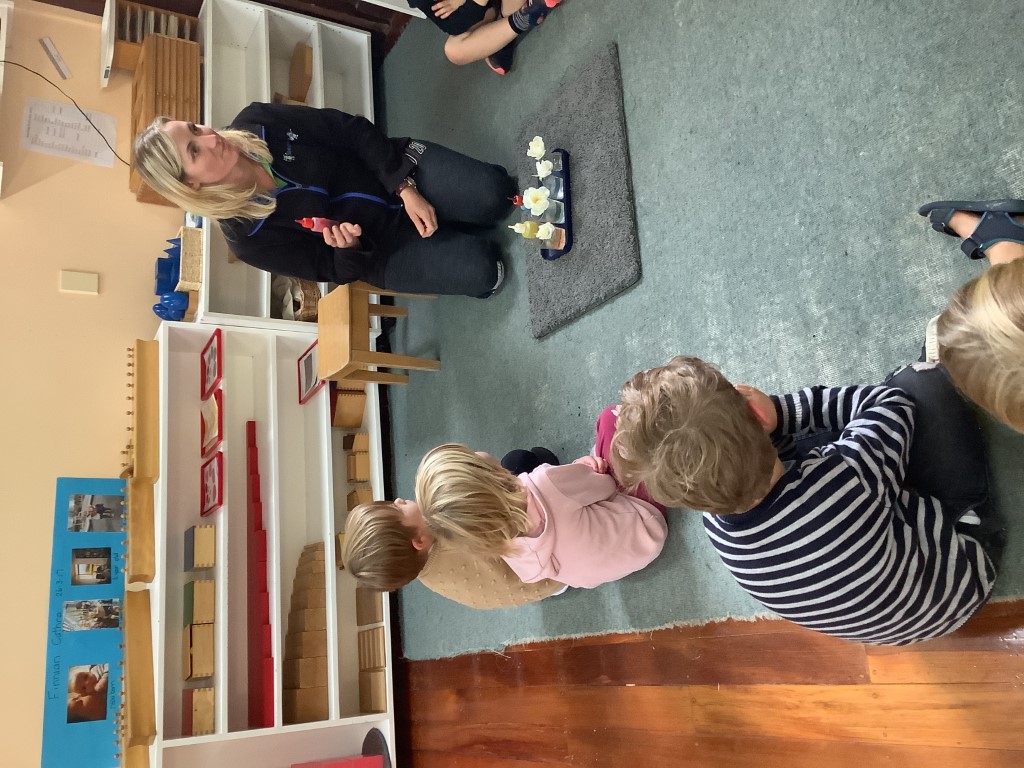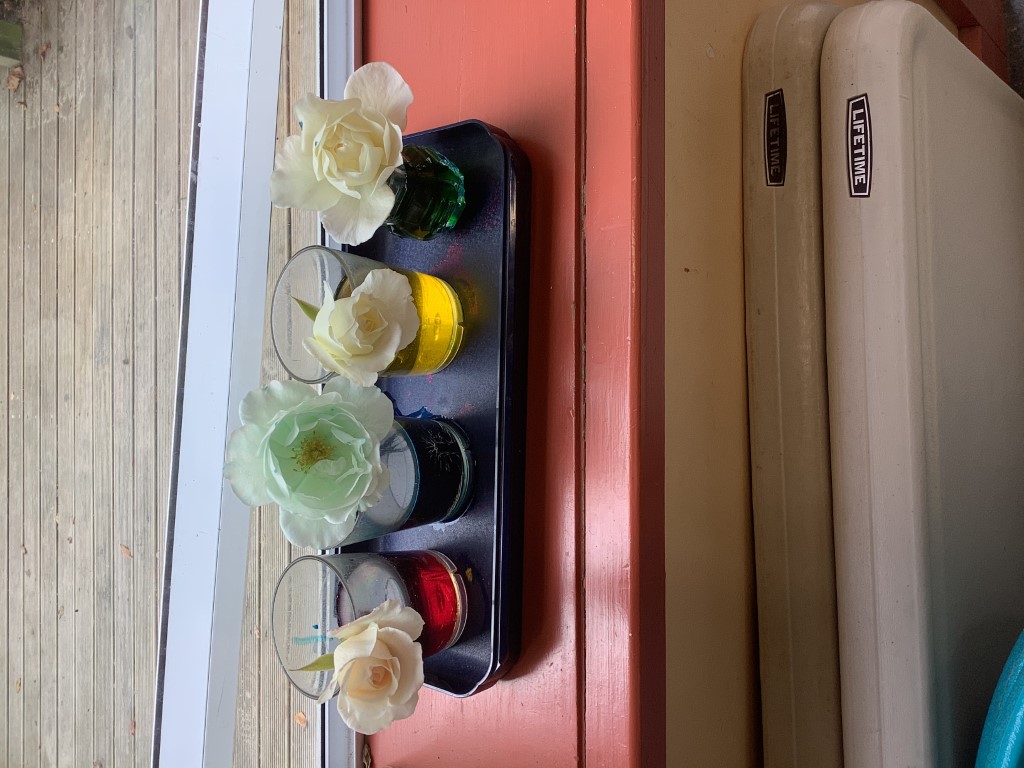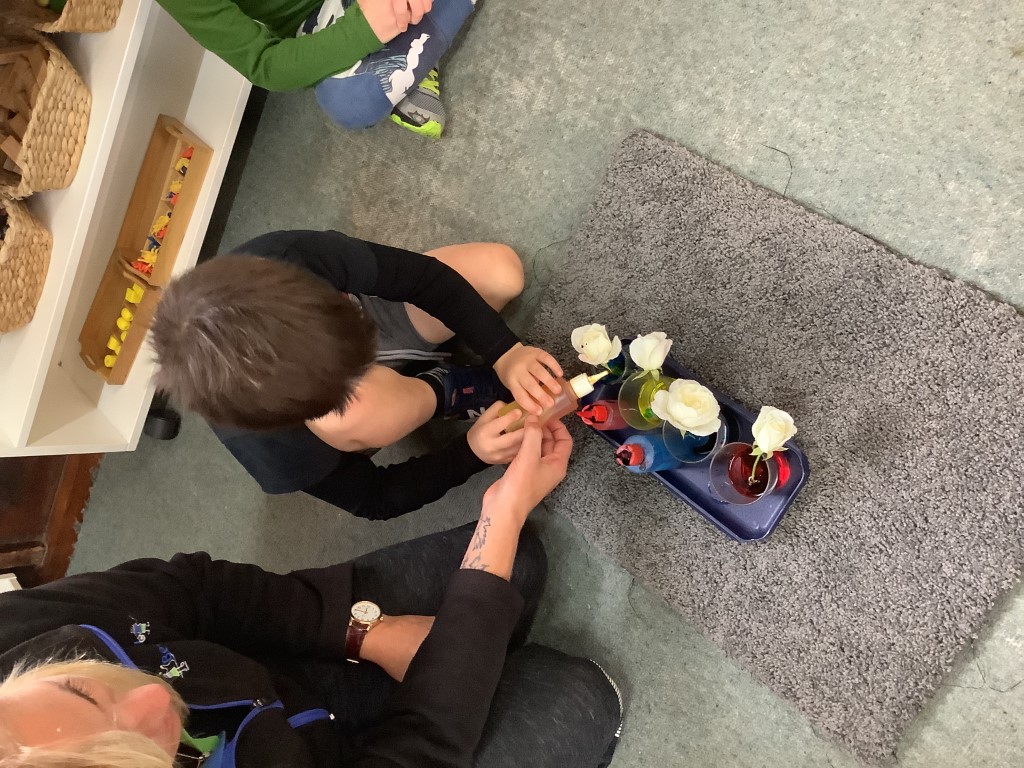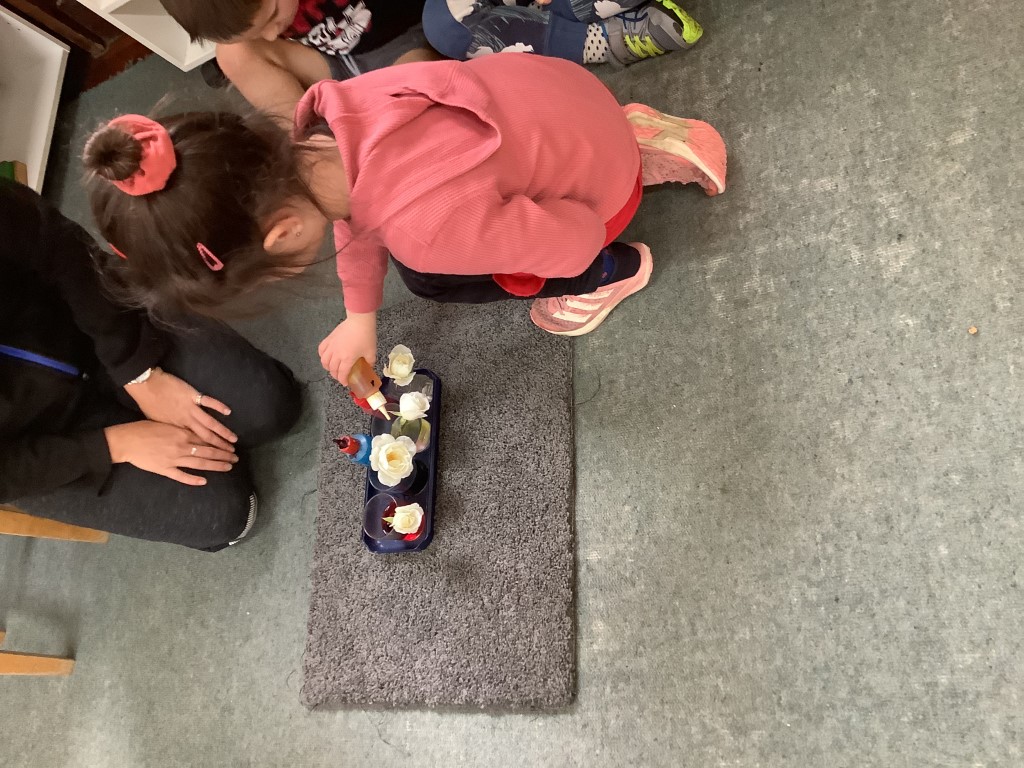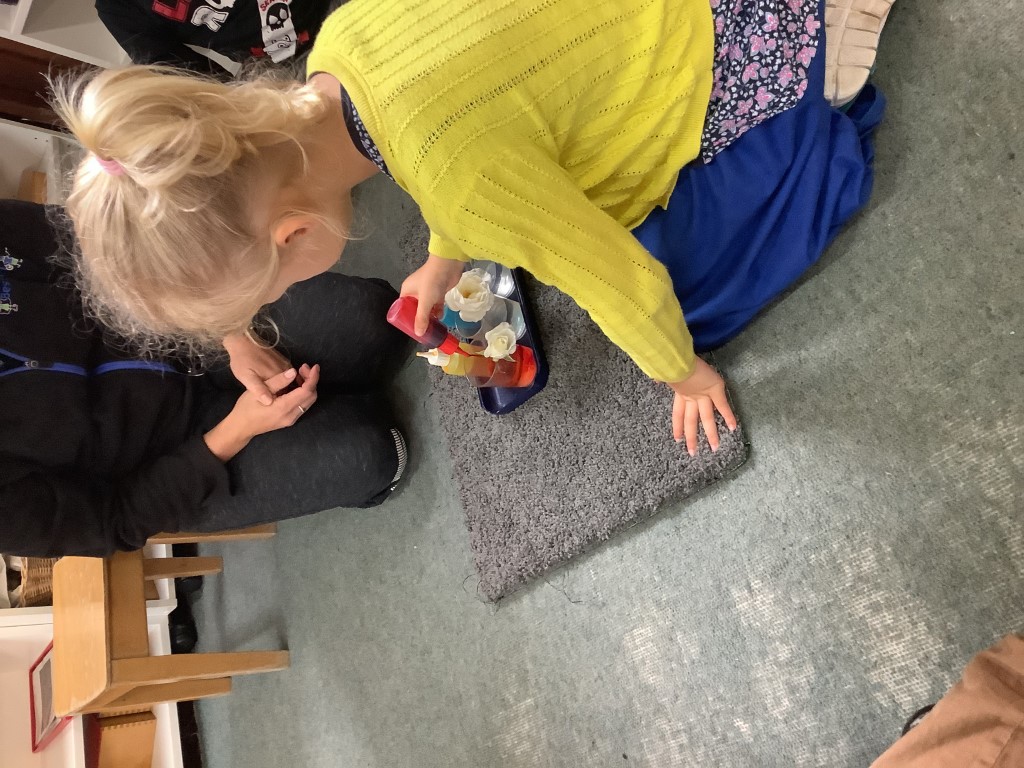LATEST STORIES
Rose Science
Our wonderful kaiako (teacher) Maxine did a science experiment with our tamariki (children) yesterday involving white roses from our rose garden and different coloured dye. The tamariki put the dye into a cup with water and carefully placed the white rose stem into it.
The hypothesis for this experiment is that the white roses would soak up the coloured water and turn the petals different colours.
We placed the tray of roses on our shelf and after lunch there was a slight colour change in some. Today the tamariki came in excited to see if any change had appeared on the roses. What a significant difference! The theory was successful and the white roses are turning whero (red), kikorangi (blue), kowhai (yellow) and kakariki (green). I am excited to see what they look like after the weekend!
Next we can split the stem and place it into two different colours and watch the magic happen.




